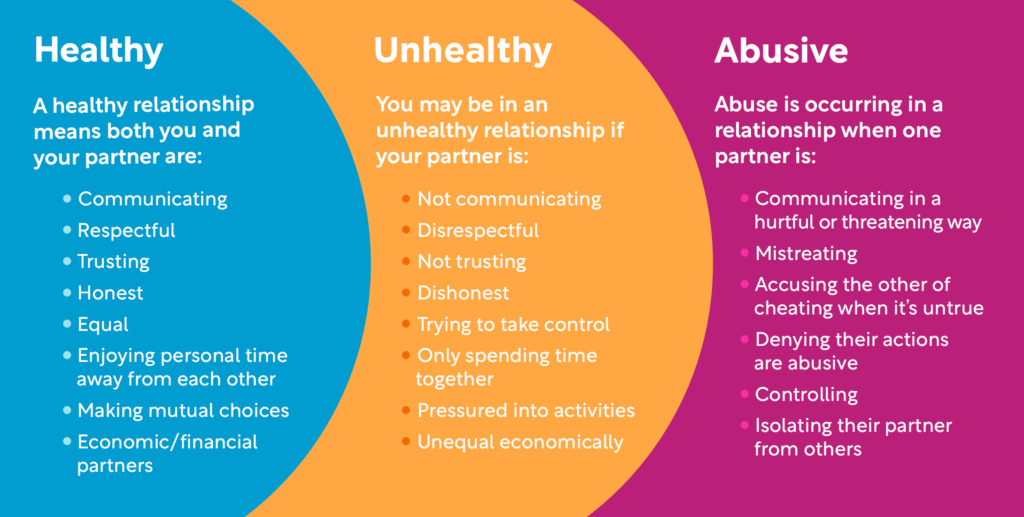Before we explore what is toxic and what is not, let’s think about relationships. Relationships can be with anybody you are in community with. They can be romantic, but they can also be platonic, familial, or professional. So, as we think about what a toxic relationship is and what it looks like, think about more than just romantic relationships. Consider your relationships with friends, associates, family members, bosses, coworkers, or roommates.
Toxic is a word thrown around very often these days, and if your timeline or ‘for you page’ is anything like mine, you hear many things being labeled toxic on social media. Now, I will admit I see many things that can be considered “toxic.” Still, I think without a real understanding of what healthy and unhealthy characteristics are in a relationship, we might call something toxic and not know why.
Before we proceed, I don’t want to use the word toxic; this is to avoid using a word already charged or overused. Let’s use healthy and unhealthy, so the question is, “Am I in an unhealthy relationship?”
So, what are the characteristics of an unhealthy relationship? Below, you will find a graphic with some examples. Here are some examples to highlight: Not communicating, dishonesty, being pressured into activities, only spending time with each other, and controlling behavior.

While you see unhealthy characteristics in a relationship, does that mean the relationship will always be unhealthy?
Not necessarily. After realizing a relationship has unhealthy characteristics, the steps with the involved persons will determine if it can be healthy again. Once you have voiced your concerns to the appropriate person, you both must find the will to move forward. Moving forward, we will take work from all persons involved.
(ways to move forward are in bold)
If you constantly disagree with your partner about the same thing, counseling separately and together can be a solution. You may need to find other ways of support, for example, you and a friend talking to a trusted mentor on campus. Finding support can look different if it is someone else, for example, talking to human resources at your job if it is your supervisor.
Learning and practicing healthy communication can help the relationship move forward. Instead of blaming someone by saying, “You don’t listen to what I’m saying,” you could say, “I feel hurt when you scroll on social media while I am talking. This makes me think you do not care what I say.”
No matter what, both parties have to be open enough to be accountable for what they say and the role they may have played in the past to move forward. No relationship will ever be perfect, but how we engage when issues arise will be the ultimate test of a healthy or unhealthy relationship.
Written by Morgan-Allison Moore, M.Div. (Pronouns: She/Her/Hers)
Assistant Director, SIV Prevention and Outreach, Health Equity, and Access
Email: moorem23@miamioh.edu
This article was originally published in the newsletter ‘Courageous Connections.’ Subscribe here to stay up to date with resources, events, and ways to support survivors of sexual assault or interpersonal violence.


